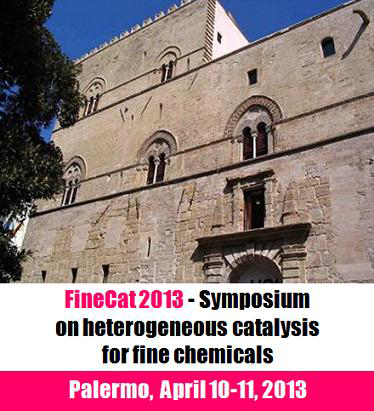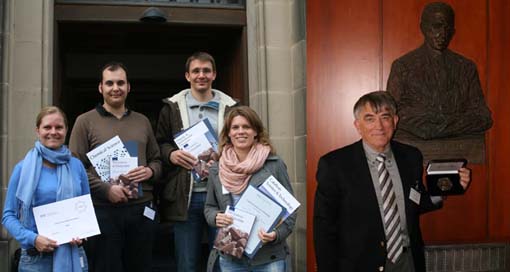This month sees the following articles in Catalysis Science & Technology that are in the top ten most accessed:-
Advances in conversion of hemicellulosic biomass to furfural and upgrading to biofuels
Saikat Dutta , Sudipta De , Basudeb Saha and Md. Imteyaz Alam
Catal. Sci. Technol., 2012,2, 2025-2036 DOI: 10.1039/C2CY20235B
Homogeneous and heterogeneous catalysis in industry
Johannes G. de Vries and S. David Jackson
Catal. Sci. Technol., 2012,2, 2009-2009 DOI: 10.1039/C2CY90039D
Catalytic chemical transformations with conformationally dynamic catalytic systems
Naoya Kumagai and Masakatsu Shibasaki
Catal. Sci. Technol., 2012, Advance Article DOI: 10.1039/C2CY20257C
Graphene-based materials for catalysis
Bruno F. Machado and Philippe Serp
Catal. Sci. Technol., 2012,2, 54-75 DOI: 10.1039/C1CY00361E
Graphene oxide enwrapped Ag3PO4 composite: towards a highly efficient and stable visible-light-induced photocatalyst for water purification
Lei Liu , Jincheng Liu and Darren Delai Sun
Catal. Sci. Technol., 2012, Advance Article DOI: 10.1039/C2CY20483E
“Click” magnetic nanoparticle-supported palladium catalyst: a phosphine-free, highly efficient and magnetically recoverable catalyst for Suzuki–Miyaura coupling reactions
Qiang Zhang , Hong Su , Jun Luo and Yunyang Wei
Catal. Sci. Technol., 2012, Advance Article DOI: 10.1039/C2CY20532G
Role of mixed metal oxides in catalysis science—versatile applications in organic synthesis
Manoj B. Gawande , Rajesh K. Pandey and Radha V. Jayaram
Catal. Sci. Technol., 2012,2, 1113-1125 DOI: 10.1039/C2CY00490A
Conversion of lignocellulose into renewable chemicals by heterogeneous catalysis
Hirokazu Kobayashi , Hidetoshi Ohta and Atsushi Fukuoka
Catal. Sci. Technol., 2012,2, 869-883 DOI: 10.1039/C2CY00500J
First-principles kinetic modeling in heterogeneous catalysis: an industrial perspective on best-practice, gaps and needs
Maarten K. Sabbe , Marie-Françoise Reyniers and Karsten Reuter
Catal. Sci. Technol., 2012,2, 2010-2024 DOI: 10.1039/C2CY20261A
Highly dispersed silica-supported nanocopper as an efficient heterogeneous catalyst: application in the synthesis of 1,2,3-triazoles and thioethers
Pitchaimani Veerakumar , Murugesan Velayudham , Kuang-Lieh Lu and Seenivasan Rajagopal
Catal. Sci. Technol., 2011,1, 1512-1525 DOI: 10.1039/C1CY00300C
Why not take a look at the articles today and blog your thoughts and comments below.
Fancy submitting an article to Catalysis Science & Technology? Then why not submit to us today or alternatively email us your suggestions.
Comments Off on Top ten most accessed articles in September





















